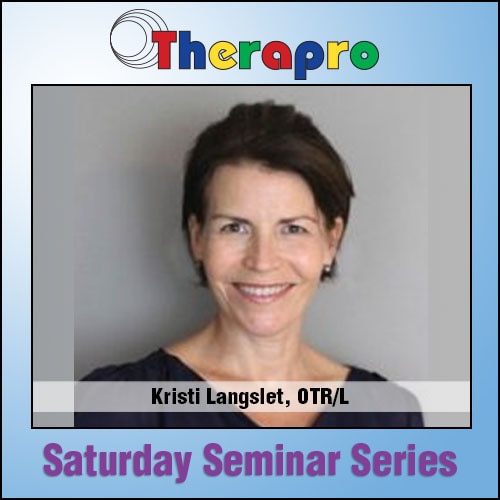The Annual Ohio OT/PT School-Based Practice conference celebrated its 25th year on August 7-8 in Columbus! From one year to the next, this conference attracts therapists from Ohio as well as surrounding states. This year the venue was bursting with almost 700 energized attendees. The conference always offers exceptional speakers who present the latest information for both new and seasoned therapists.
We were proud that Therapro author Tere Bowen-Irish, OTR/L presented the Keynote address entitled: “Weaving Visualization and Mindfulness into Your Practice.” She offered a variety of sessions throughout the conference, attracting capacity crowds eager to hear her lively presentations incorporating her Drive Thru Menus. Tere introduced a brand new addition to her product line-up called: Sensory Processing Support Planning Guide.
Other presentations offered show the diversity and breadth of this conference: Athena Oden, PT presented “Ready Bodies, Learning Minds: Cultivating the Complete Child.” Take a look at her website for learning more about her unique approach that provides developmental support for integrating both the sensory systems and motor systems as a basis for academic success. Just a few of the other excellent sessions included: “Integrating Primitive Reflexes to Improve School Function’ by Kim Wiggins, OTR/L, “Developmental Coordination Disorder: Best Practices for Recognition and Management in the School Setting,” by Erin Iverson, PT, DPT, PCS and Patti Sharp, OTD, MS, OTR/L, and “Are We Ready to Meet the Obesity Challenge?” by Cindy Miles, PT, PhD, PCS.
Therapro owner/president Karen Conrad Weihrauch and I enjoyed greeting all the therapists who stopped by the Therapro exhibit. Attendees eagerly tried out some of the latest Therapro products: Safety Grip Scooter Board, Eazyhold universal cuffs, Yoga Spinner Game, Gyrobi fidgets, Stikbot, and Peg Friends: Around the Town.
The Therapro game, Letter Treasure Hunt, was acclaimed by therapists who purchased it at last year’s conference. One therapist excitedly relayed that she loved the game because it was so versatile. She discovered she could use it for students of a variety of ages and abilities. For example, she told us that with one student, she used just the spinner part of the game to help develop fine motor skill.
The new revised edition of Fine Motor Olympics was hard to keep on the shelves! Therapists loved the 64 beautiful color card deck photos of children’s hands performing various fine motor tasks. On the reverse side of the cards there is information on how to perform and adapt the activity as well as identification of the hand functions that are being targeted by the activity. The revised manual includes a quick screening form, a fine motor observation checklist, a record form, plus an in-service training program. All agreed that Fine Motor Olympics is a very practical, important tool to add to the therapy toolbox!
Mary Kay Eastman, PT, MS and Molly Dodge, OTR/L co-chaired this event once again seamlessly. With a dedicated team of hard workers, the two-day conference hummed along and offered attendees a broad selection of relevant, interesting topics. Conference coordinator, Holly Bartholomew of First Class Conferences, once again made sure all ran smoothly throughout the conference. Great job, ladies! Thank you for two exhilarating days. We look forward to seeing you next year!
Filomena Connor, MS, OTR/L


 Evidence-based practice (EBP) involves the integration of:
Evidence-based practice (EBP) involves the integration of: